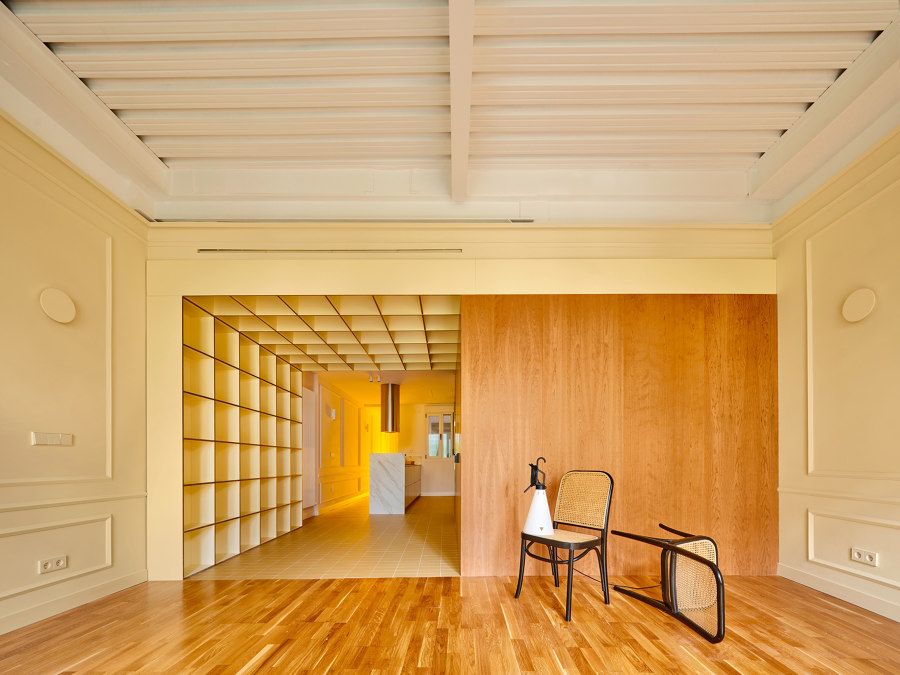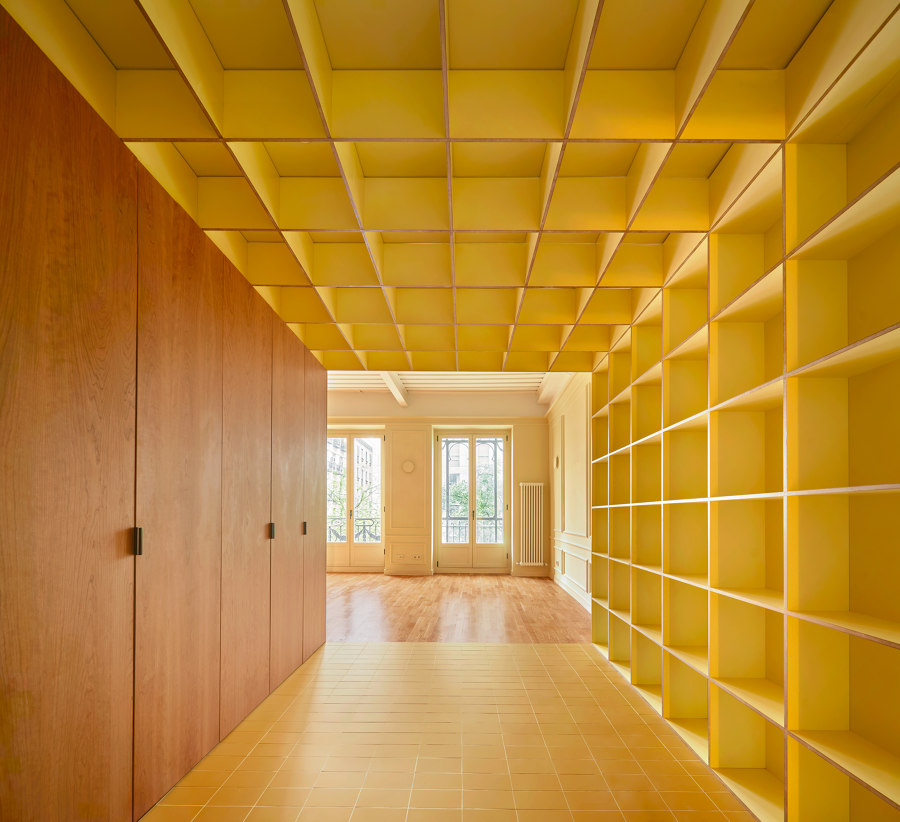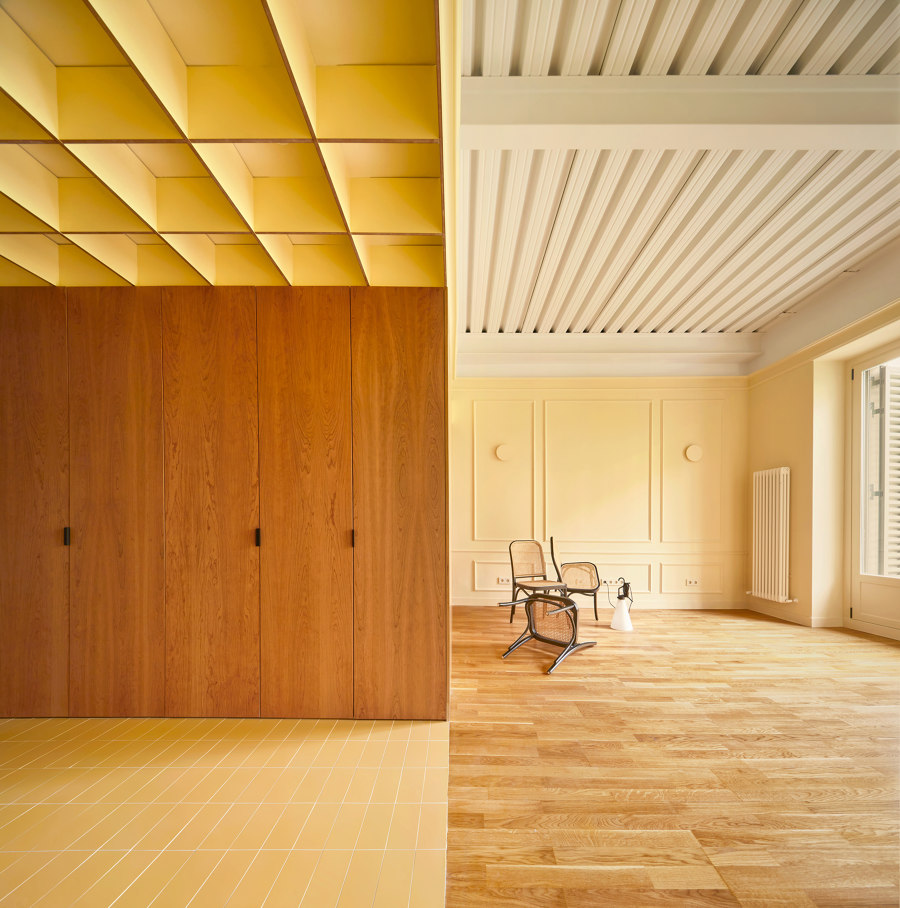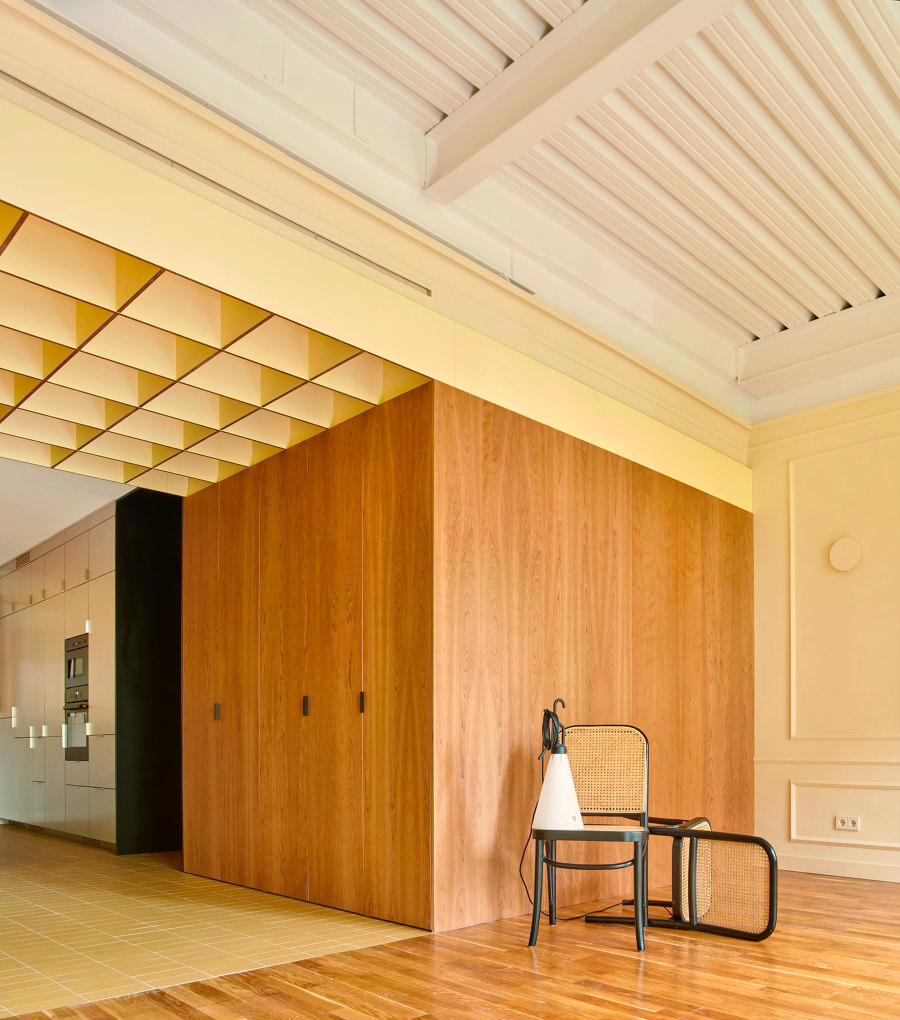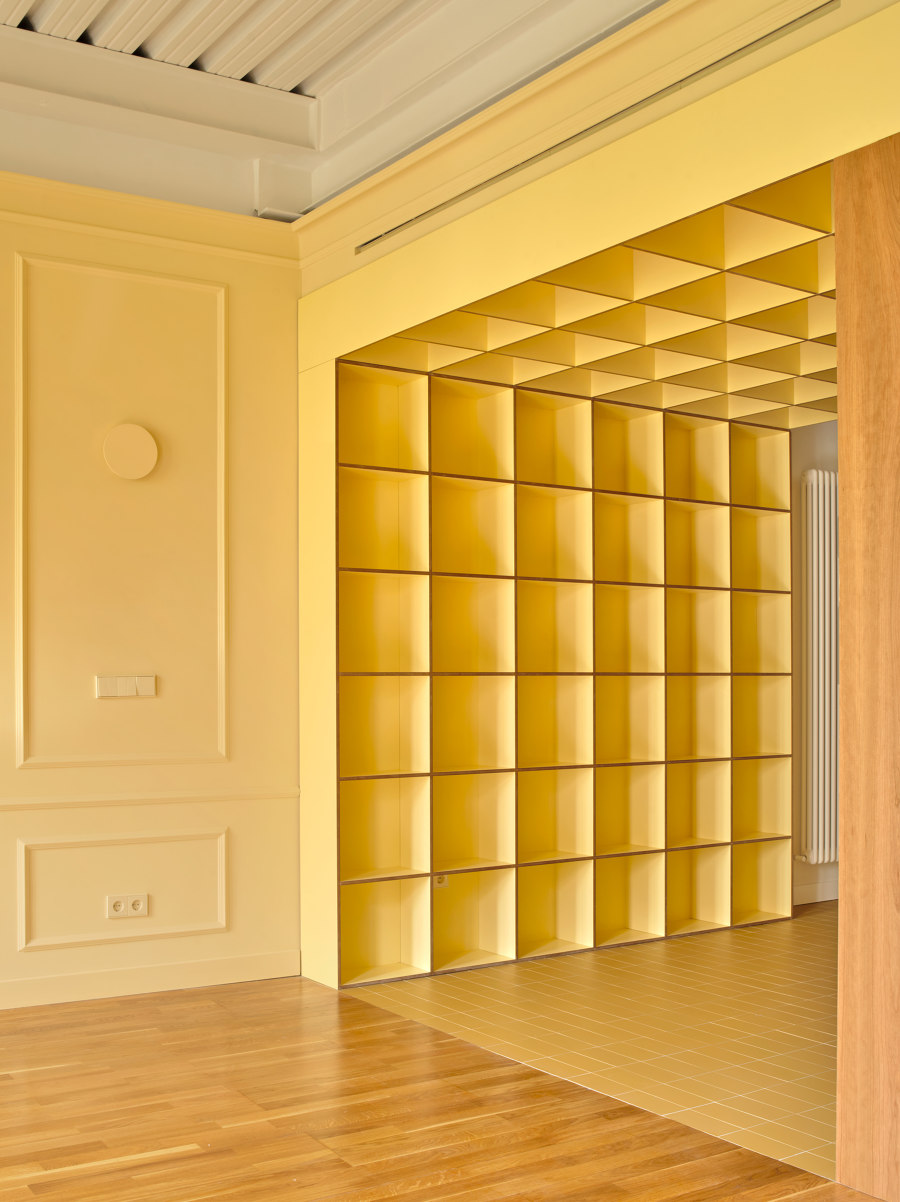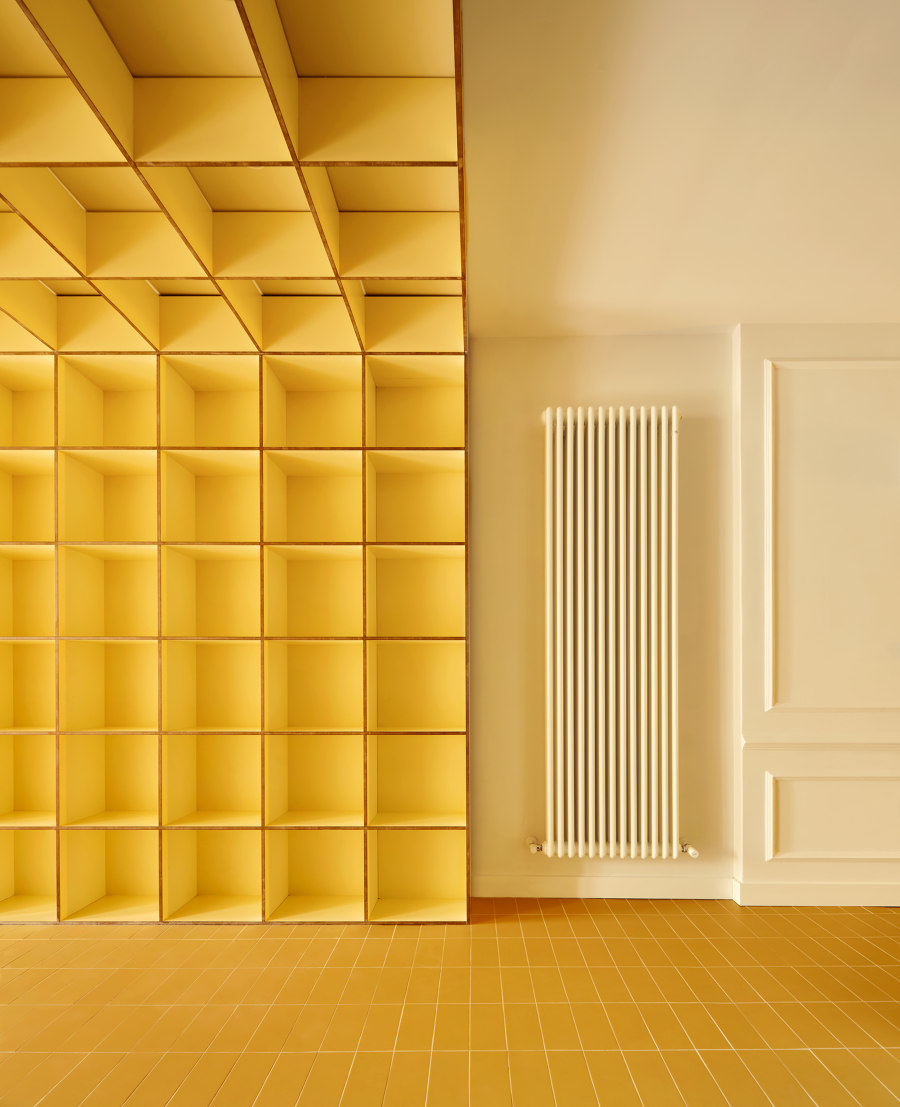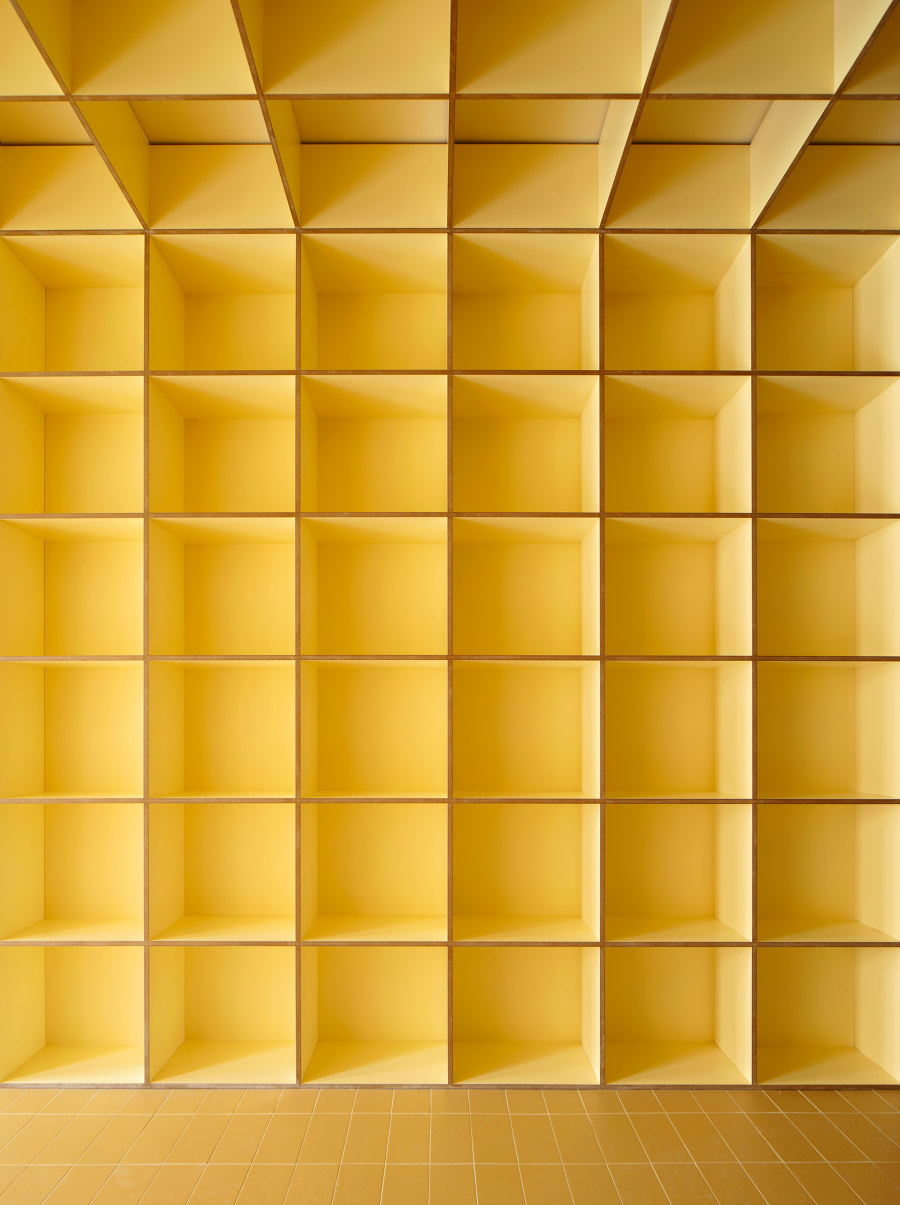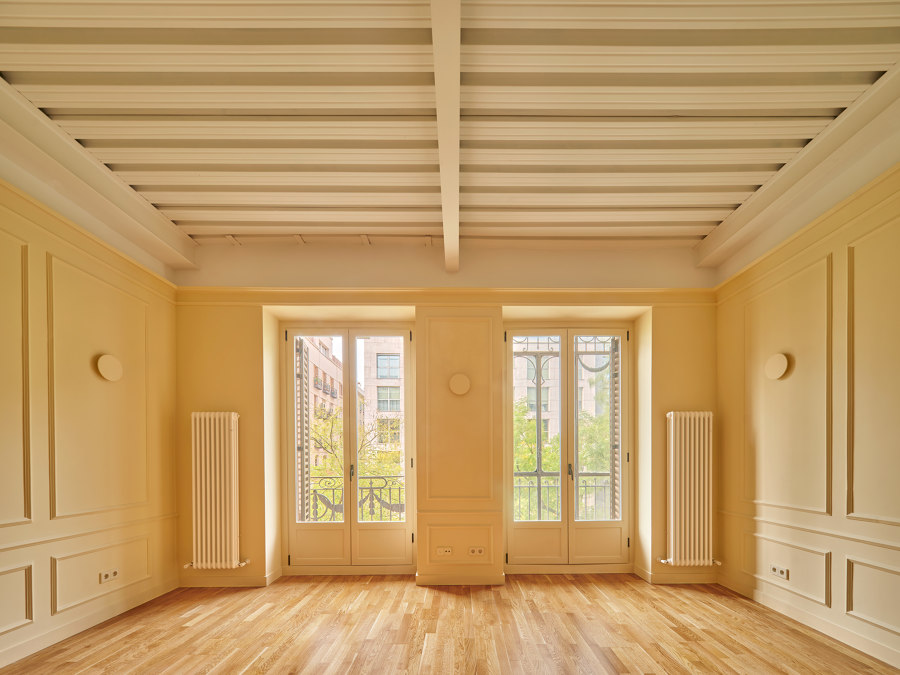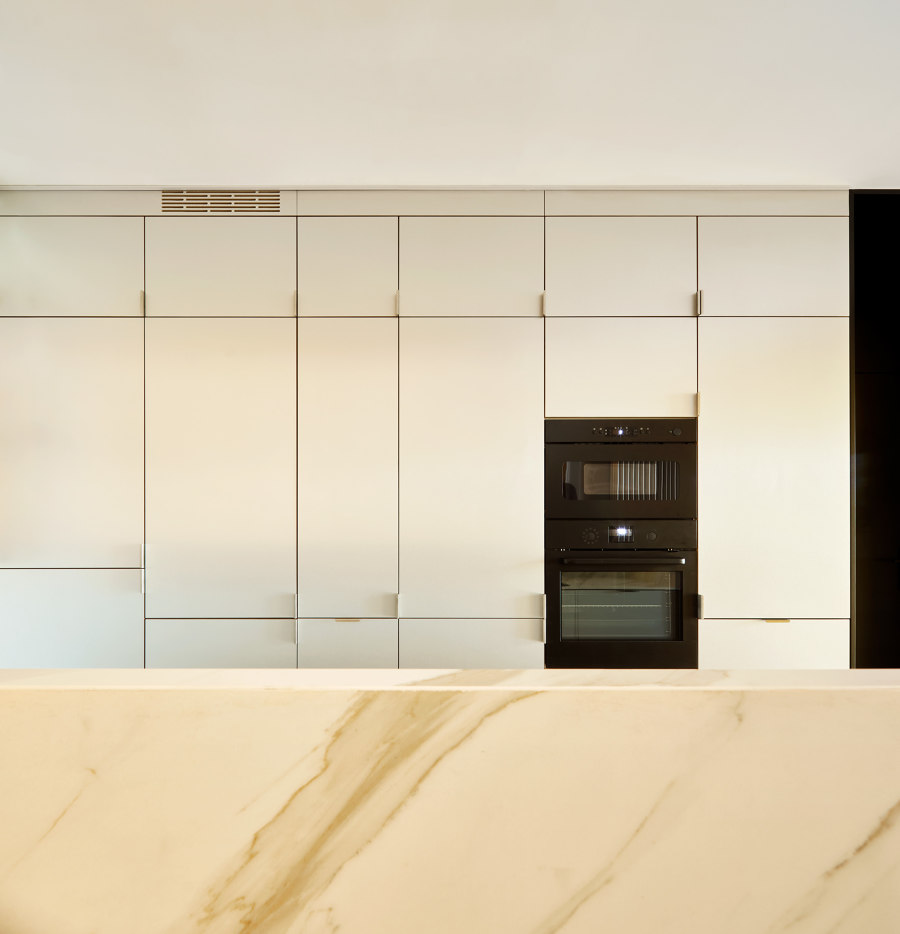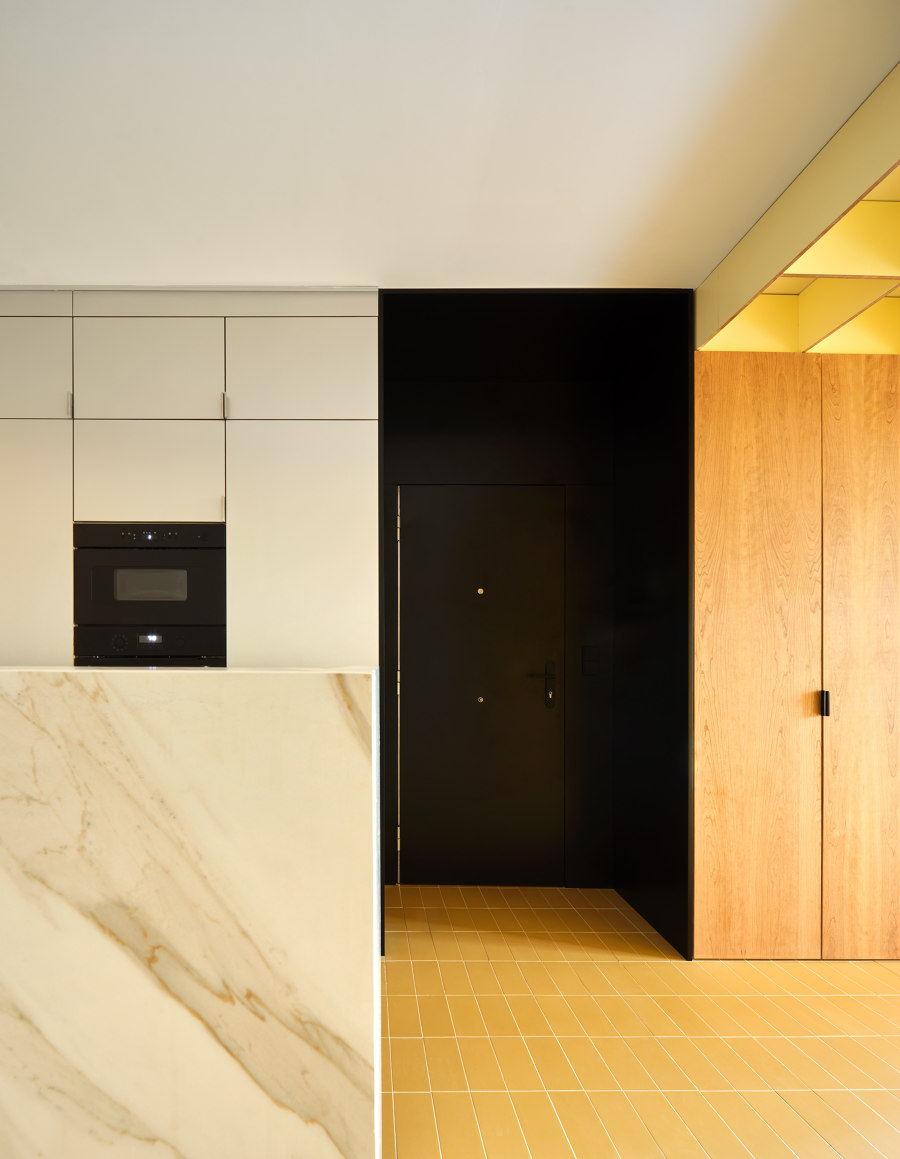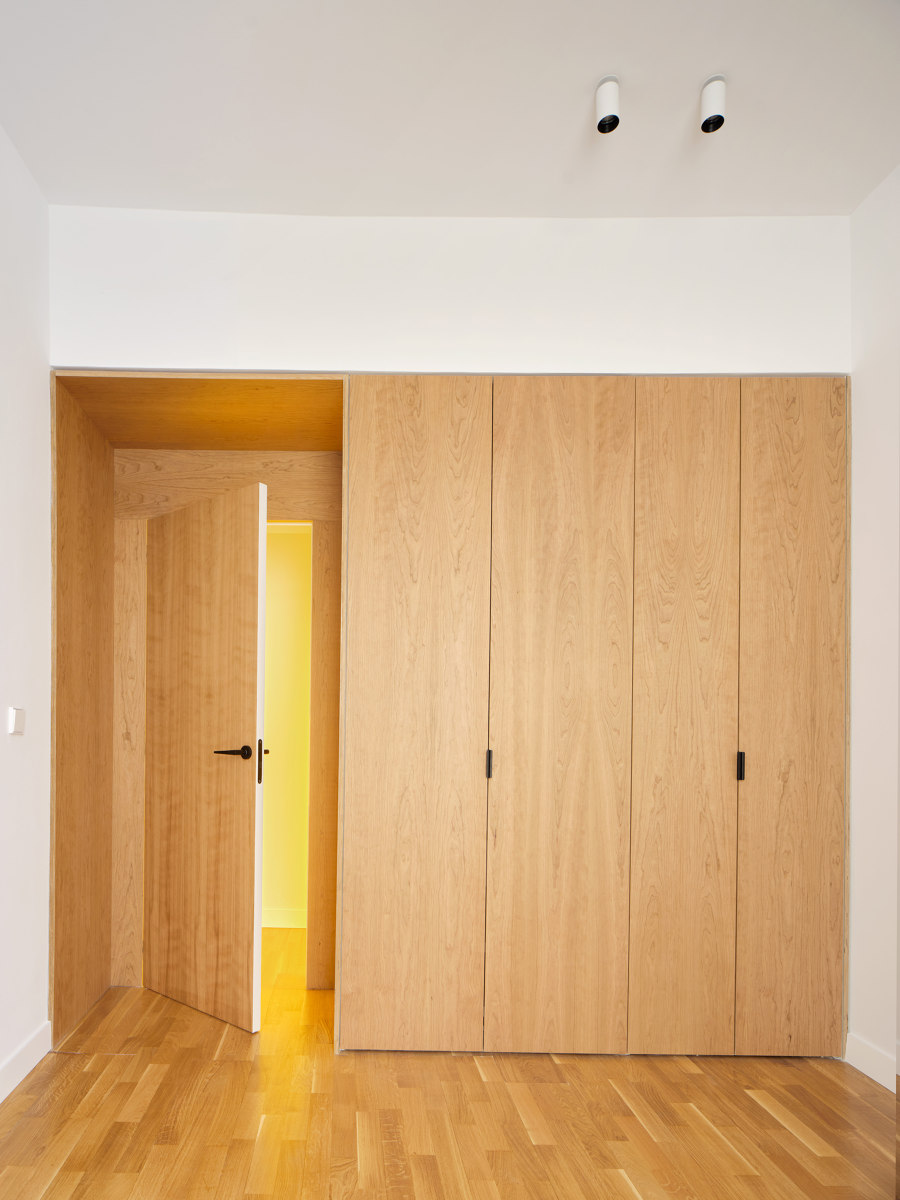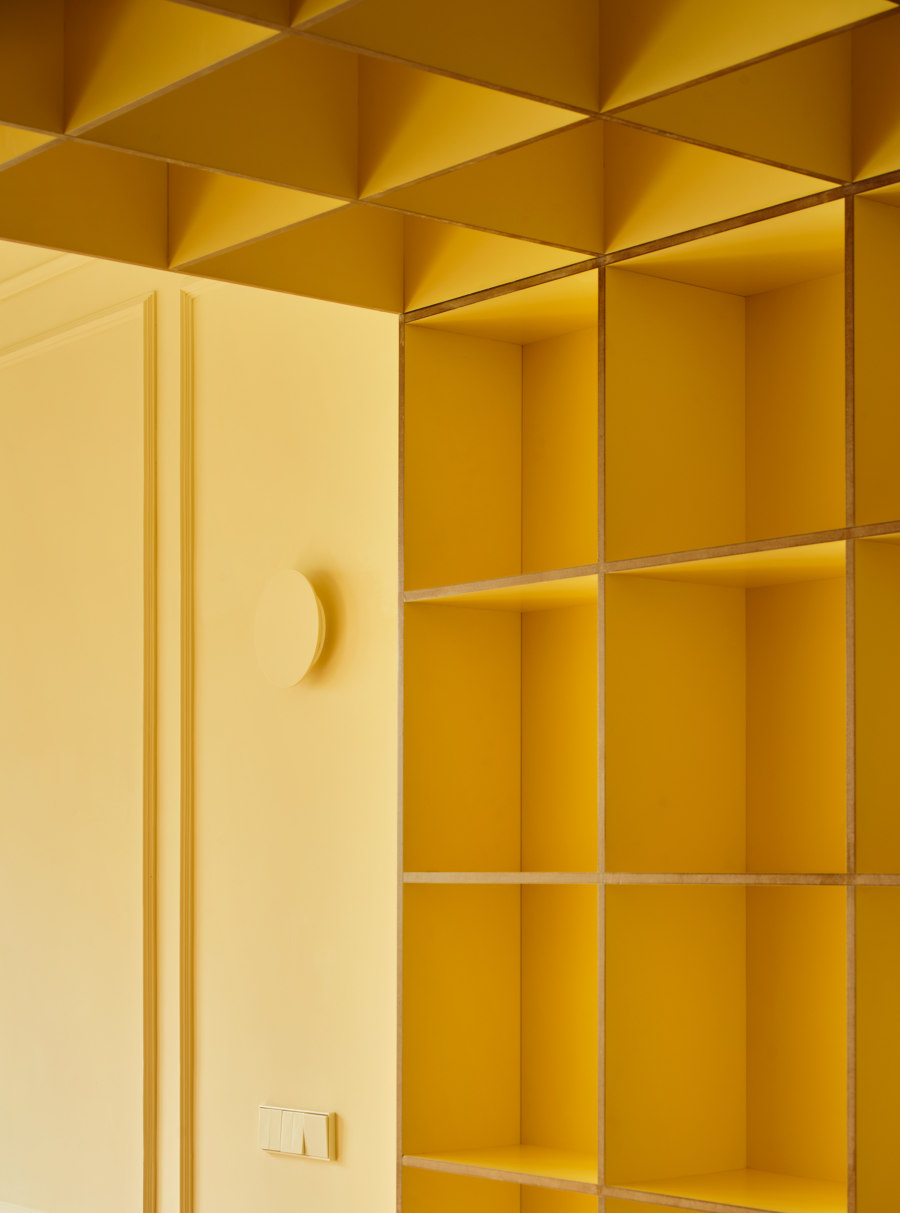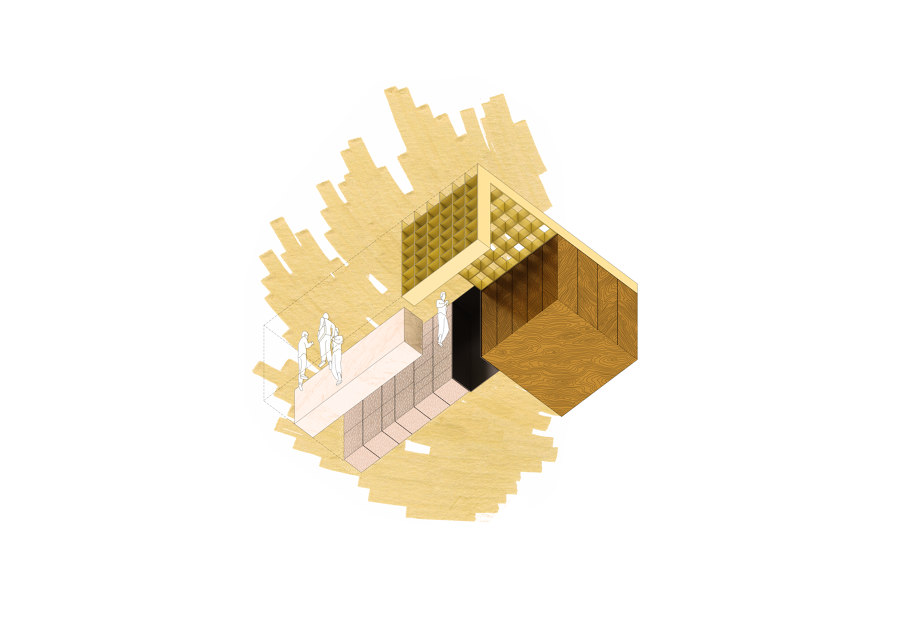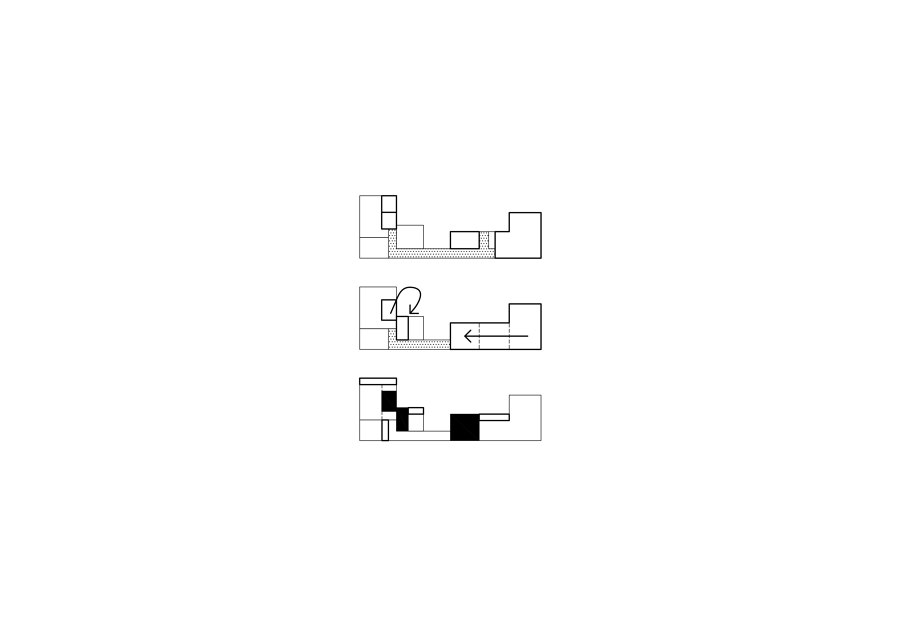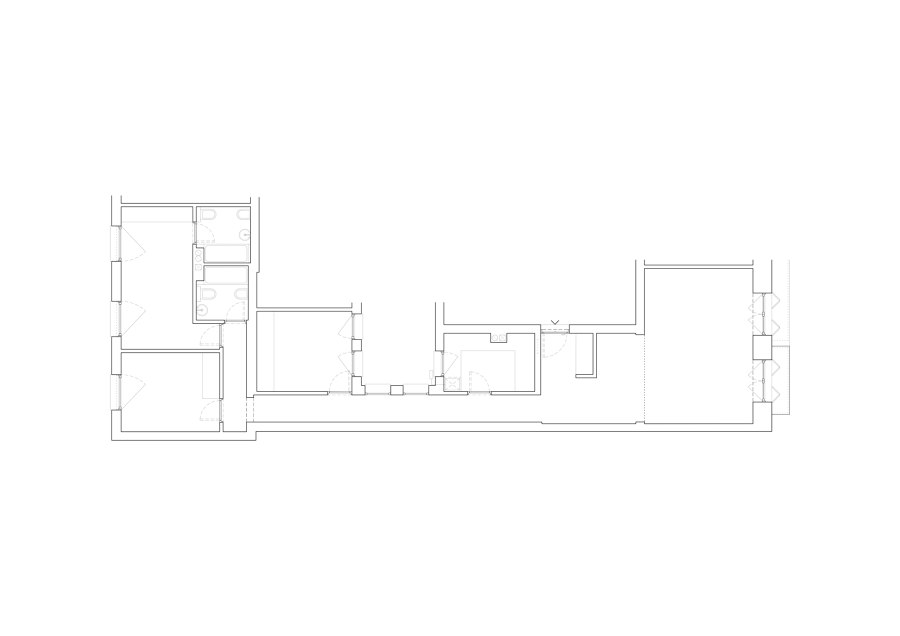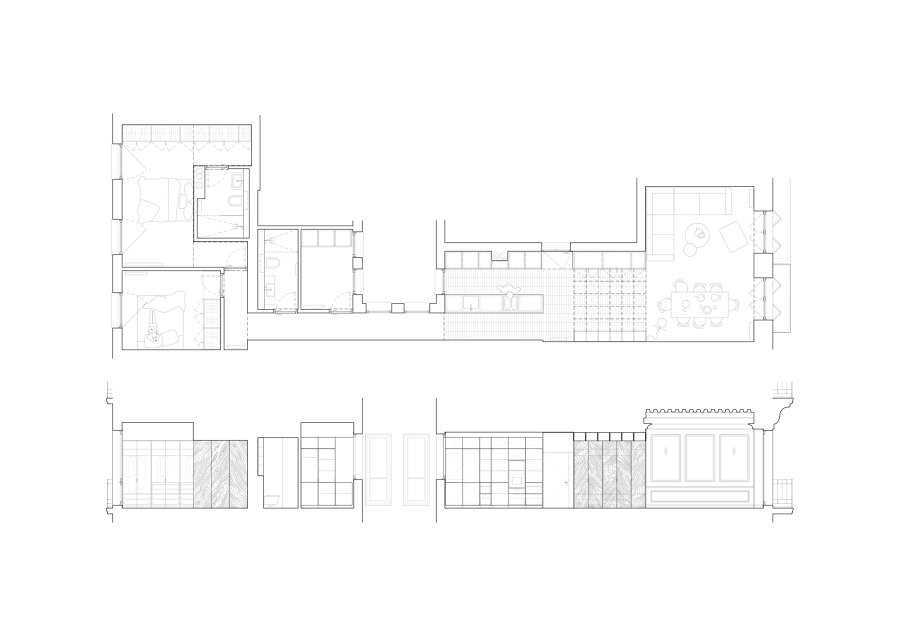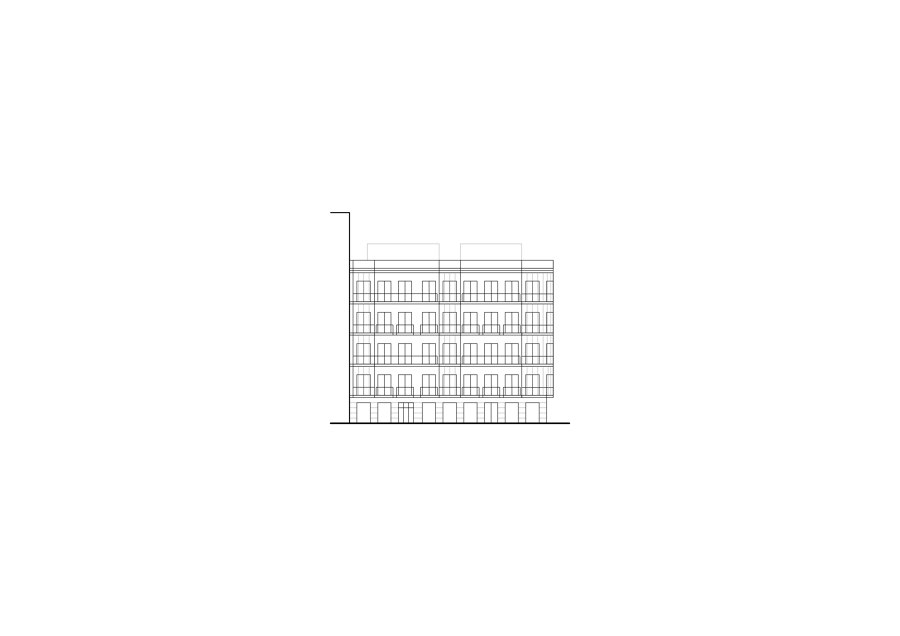The housing in Madrid at the beginning of the 20th century was characterized, in general, by an elongated distribution of the domestic program, resulting in very long corridors and small interior courtyards. Our proposal for this traditional typology consists of unifying a series of spaces, eliminating distributors and corridors as much as possible, to turn them into programmed rooms.
The previous state of the house was organized with an entrance hall and closet, a corridor that led to the bedrooms and the separate kitchen, and finally, a living room separated from the rest of the house facing the exterior facade. The new distribution groups the main programs: entrance hall, kitchen, and living room; eliminating the corridor between them and turning each domestic program into an object with its own identity.
Each room in the house is occupied by an object that qualifies the space and makes it function specifically. The main piece in the entrance of the house is characterized by a huge shelf that covers the wall and folds horizontally, resulting in a false ceiling of cells that illuminates and conditions the space. This spatial shelf is made of raw plywood panels with a vanilla-colored laminate. A built-in wardrobe serves as support to hold this inverted L-shaped structure.
The wardrobe seen from the living room functions as a large cherry wood cube assembled with the shelf. Finishing off this wooden piece is the entrance to the house executed with a black paneling. This hollow and dark piece serves as a hinge to finish with an open kitchen connected to the entrance hall and living room. The position of the countertop and the elimination of the partition that separated the kitchen allow the corridor to be used as an area that makes cooking more playful.
All the materials used in this project play with a radical heterogeneity, assigning materials and colors to each domestic program or piece. Cherry wood, aluminum, marble, ceramics, vanilla, ivory, and off-white...
To optimize the construction budget, some elements are maintained, such as the wooden flooring, exterior carpentry, some partitions, and false ceilings... On the other hand, other elements are unveiled in the demolitions as something valuable, the metallic structure that was installed in the reconstruction of the building is exposed when removing the false ceiling that covered it, gaining a height of over three meters in the living room.
Cornices, moldings, and plaster moldings typical of a house from the early 20th century resist and coexist with metal beams and collaborating plates from the last major renovation.
Design Team:
Lead Architect: Gonzalo del Val
